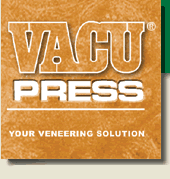Don Stephan

Posts: 825
Joined: 2003-07-18
Location: Cincinnati, Ohio
 User Profile User Profile |
After a number of messes, the method I decided on is as follows.
I mix the urea formaldehyde resin and powder in wax paper cups as one might get for fast food drinks. After several years of searching, I finally realized I needed the small whisk beaters sold as accessories for many small hand electric mixers. I simply chuck one in a cordless electric drill and mix away. As soon as the glue is fully mixed, "mix" a container of water for a couple minutes to remove most of the glue from the whisk. Leave the whisk in the water for now.
When fully mixed, I pour a little at a time directly onto the substrate, rather than first pouring in a paint roller pan. This avoids having to clean the roller pan, waste a lot of water, and flush some of the glue down the drain.
When pouring onto the substrate, I pour thin lines of adhesive all over so the adhesive is initially somewhat dispersed. I spread the adhesive with a foam roller. Depending on the size of the job, I'll use either a 3" or 4" foam roller pad on a small paint roller, or a 12" foam roller pad and roller. These black foam roller pads are excellent for spreading the adhesive, but sometimes are hard to find locally. I order a case at at time from www.brush.com.
The general rule of thumb (or finger in this case) is to spread a sufficiently thick layer of glue so that if a finger is dragged through it a small ridge is left on each side. The objective is to have a small amount of squeezeout all around the veneer.
Many people use tape to hold the veneer in place against the substrate while loading the bag. Probably anal, but I worry that the thickness of masking tape could cause a compression in the veneer while in the vacuum bag, so I use good 3M packing tape. I've had the packing tape lift some wood from the surface of the veneer, so I try to remember to place 2" veneer paper tape on the surface of the veneer wherever I expect to place a strip of packing tape.
With a full vacuum on the bag, remove the foam roller pad from the roller frame and throw the pad away. Throw away the cup and excess glue. Clean the whisk and work surface. Have a well deserved break.
Always make a dry run before mixing adhesive. Assemble the "sandwich" of cauls, substrate, and veneer. Wrap the substrate and veneer with 4 mil plastic, wax paper, whatever as you will during glue-up. Slide all into the vacuum bag, close and seal, and turn on the pump. If there's a problem with the pump, better to find before glue mixed and spread. This also allows an opportunity to learn how much if any pushing and prodding of the bag will be needed because the "sandwich" is especially thick, sharp corners, bunching of canvas/breathermesh . . .
Pour some of the excess glue in a baggie and seal tight. Place on top of the vacuum bag - when the glue in the baggie is stiff the sandwich can be removed from the bag.
As soon as the sandwich is removed I gently remove the packing tape before it has time to bond more firmly. Then stand up the substrate and veneer at least overnight to allow drying and further curing.
|






